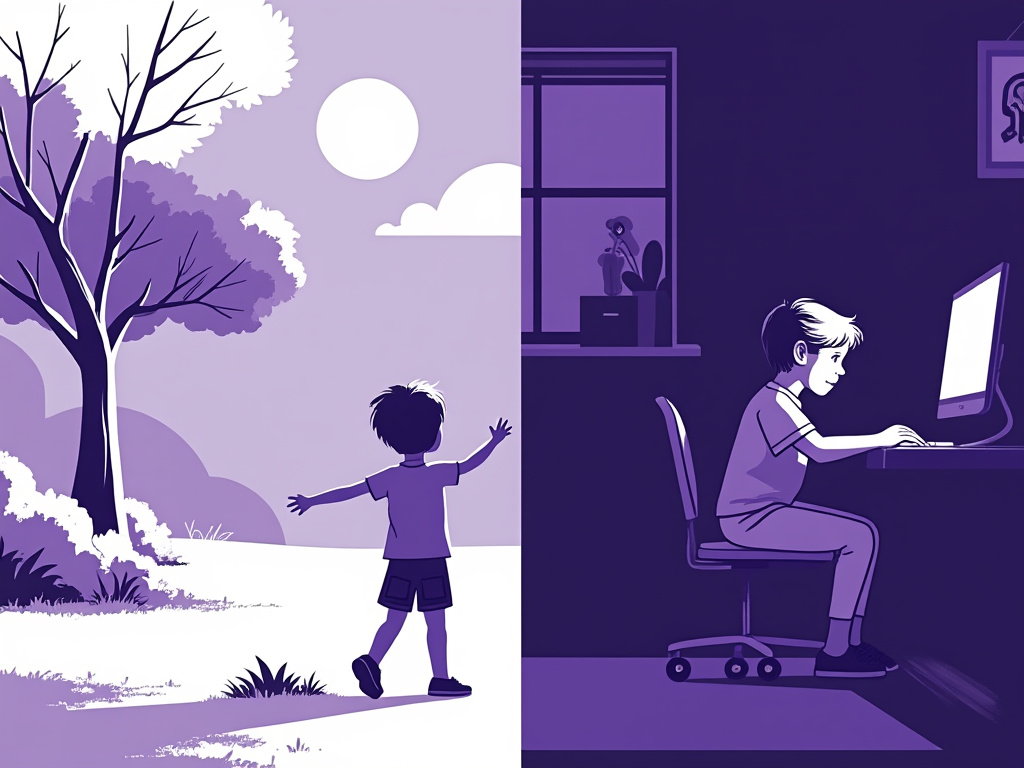The Impact of Media on Children's Well-being

The use of social networks, the Internet, video games, television, cell phones, and many other electronic devices and digital platforms has accelerated in recent years, and the number of children who consume these elements has dramatically increased. This fact has various consequences for the mental and physical health of children, and they are not always positive.
The Role of Media in Children's Lives
Media plays a significant role in the lives of contemporary children. It constitutes their most substantial leisure-time pursuit. However, this increased exposure to media has brought with it various concerns regarding its effects on children.
Over the last quarter-century, violence in television programs, video games, the Internet, and other entertainment products for children has gradually increased. After decades of debate, there is now a general consensus that media violence is a risk factor contributing to the development of aggressive behavior, fears, and anxieties in children.
Media encompasses various modern communication tools: television, cinema, radio, photography, advertising, newspapers and magazines, recorded music and lyrics, computer and video games, the Internet (including blogs, chats, podcasts, Skype, webcams, online social networks like Facebook and YouTube), and mobile phones. All of these platforms are changing the way children and adults communicate with each other, with young people largely driving these changes.
Negative Effects of Media on Children
- Media violence conveys the idea that violence is pervasive, which contributes to a greater risk of abuse and violence in homes, workplaces, and communities.
- Children in the Western world, aged 8 to 18, spend more time (an average of 44.5 hours per week or 6.5 hours daily) in front of screens (computers, televisions, and gaming devices) than engaging in any other activity, except sleeping.
- Prolonged screen time makes it challenging for children to distinguish between fantasy and reality, as they learn by observing and imitating, struggling to discern between virtual reality and real-life when exposed to screens for extended periods.
Impact of Mobile Phones
Mobile phones have become a ubiquitous presence in children's lives, with reports of addiction leading to admissions to mental health clinics. Mobile Internet, including web browsers, chat services, and emails, has introduced new ways of communication. Mobile phone addiction can have physical, psychological, and academic effects on children, including sleep deficits, anxiety, stress, and depression.
Effects of Video and Computer Games
Video games have been a topic of debate and censorship due to graphic violence, sexual themes, advertising within games (advergaming), and discussions of addiction, substance abuse, crime, nudity, and profanity. Certain games have been linked to addictive behavior and violent tendencies in children.
Violent video games can lead to more aggressive thoughts, feelings, and behaviors in children, while decreasing empathetic and helpful behavior towards peers. High levels of exposure to violent video games have been associated with delinquency, school violence, and criminal behavior.
Television, Movies, and Advertising
Television and movies frequently depict violence, accidents, wars, and other distressing incidents. Violent content can have detrimental effects on children, including the learning of aggressive attitudes and behaviors, desensitization to violence, and increased fear of becoming victims of violence.
For children under 7, portrayals of high-risk violence that promote aggression are often found in cartoons. These portrayals involve attractive role models, seemingly justified violence, no consequences for the aggressor, and minimal repercussions for victims. The average American preschooler watching cartoons is exposed to over 500 high-risk portrayals of violence each year.
The Impact of the Internet
The Internet is a valuable resource for research and learning, but it can also provide easy access to inappropriate content. Chat rooms pose a risk to children's safety, and it's crucial for parents to be actively involved in monitoring and guiding their online activities.
Every week, thousands of pornographic images of children are published on the Internet. Children may encounter graphic images of violence, torture, and horror regularly. Websites displaying animal mutilations, assaults, and sadistic violence are gaining popularity. One in five children who regularly go online is approached by strangers for inappropriate content.

What Caregivers Should Consider
To mitigate the negative impact of media on children, caregivers should consider the following:
- Discuss media violence with children and encourage them to report disturbing content.
- Set clear guidelines for media use and monitor it closely.
- Explain the risks of Internet use.
- Restrict access to age-inappropriate websites.
- Encourage open communication regarding online messages and content.
- Keep computers in visible places to monitor use.
- Watch shows with children and use them as teaching moments.
- Promote media literacy and ethical media practices.
- Advocate for government regulation and engage with media editors for responsible content.
- Provide opportunities for children to express their views through media.
- Actively engage with media to ensure appropriate content.

